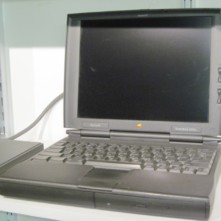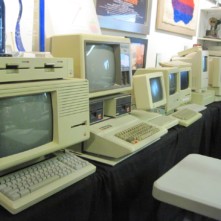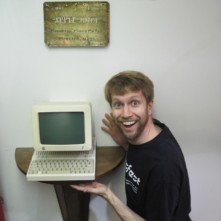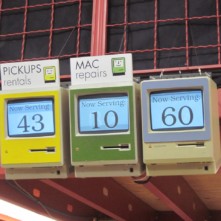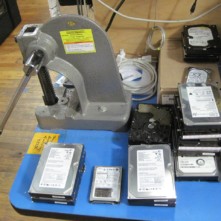New Game Plus: Lode Runner
| May 30th, 2016 9:56 AM by Ken Gagne | Filed under Game trail; 4 comments. |
It’s hard for Apple II enthusiasts to be unbiased about our favorite games. Whenever we play or discuss Oregon Trail, Choplifter, or Tass Times in Tone Town, our experiences and memories are inevitably colored by nostalgia as we recall how groundbreaking these games were upon their release and how derivative their successors seem by comparison.
What if we could wipe the slate clean and come at these games afresh? Would they stand the test of time and still appeal to a modern gamer’s sensibilities?

That’s the charter of New Game Plus, a podcast that launched this past October. Each week, three young men select a random classic computer or video game that they then spend seven days playing before reporting back their experiences. I discovered the show with episode 7, when they played their first Apple II game, Prince of Persia. I then cherry-picked other episodes to listen to, selecting games that I recalled fondly to see if these enthusiastic whippersnappers would enjoy them as well.
When they reviewed Contra III, a game I’d previously recorded a Let’s Play video of, I was surprised to hear the show deviate from its format: instead of the game selection being random, it was chosen by their first guest. It was fun to hear someone with passion and familiarity for the week’s game be brought into the mix — and it also gave me an idea.
Now that I knew New Game Plus had a precedent for allowing guests, I brazenly emailed them, touting my Apple II credentials, to ask if they would consider having me on a future episode. To my surprise and delight, they thought this was an excellent idea!
Their homework for me: select an Apple II game. This was a tougher assignment than I expected! My first thought was to nominate Conan: Hall of Volta, one of my favorite games from childhood. But at only six levels, I thought it might wear thin and not leave the hosts much to discuss. I instead turned to the Apple II Enthusiasts group on Facebook and asked for recommendations. I received many suggestions, including from John Romero.
But readers’ comments only cemented the second choice I’d already settled on: Lode Runner. With 150 levels, a storied lineage, and web-playable versions — both the emulated original and a native remake — I felt this game would be both technically accessible and sufficiently substantial to record a podcast about. And, having originally been released in 1983, it would also be the oldest game yet to have been featured on New Game Plus.
But just because I’d played the game as a kid didn’t excuse me from joining the other hosts in "researching" it! I played the game for just an hour or so and was able to make it to level 17. Although the difficulty of those levels varied wildly — as early as level 6, there are as many as 16 pieces of gold to collect! — I was surprised at my ability to progress. I attributed my success to the game freely awarding an extra life for each level completed. By the time I closed my browser window, I could’ve easily continued playing with the dozen lives I had remaining.
All this work was in preparation to record the actual episode, which has since aired as episode 35 of New Game Plus:
I had a blast chatting about Lode Runner and its creator, Douglas E. Smith, with Dustin, Nolan, and Kenny, and I was much relieved to hear that they enjoyed their first experiences with this classic game, earning it an across-the-board recommendation for modern gamers.
My thanks to New Game Plus for hosting me. I hope they continue to feature the Apple II on future episodes of the show! What games would you recommend they play next?
(Hat tip to Paulo Garcia)
